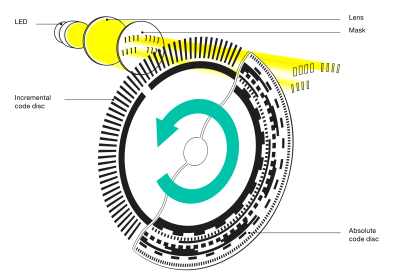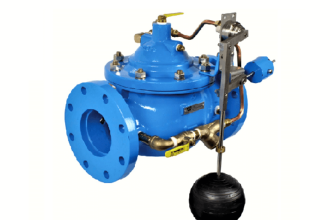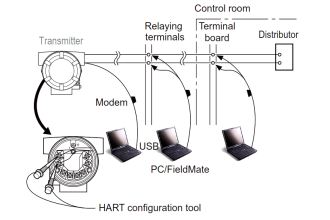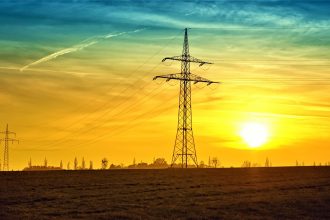What is a transformer and how does it work?
A transformer is an electrical static equipment designed to convert alternating current from one voltage to another. It can be designed to “step up” or “step down” voltages and works on the magnetic induction principle.
A transformer has no moving parts and is a completely static solid state device, which insures under normal conditions, a long and trouble-free life. It consists, in it’s simplest form, of two or more coils of insulated wire wound on a laminated steel core. When voltage is introduced to one coil, called the primary, it magnetizes the iron core.
A voltage is then induced in the other coil, called the secondary or output coil. The change of voltage level (or potential difference ratio) between the primary and secondary depends on the turns ratio of the two coils.
Why do transformers hum?
Transformer noise is caused by a phenomenon which causes a piece of magnetic sheet steel to extend itself when magnetized. When the magnetization is taken away, it goes back to its original condition. This phenomenon is scientifically referred to as magnetostriction. A transformer is magnetically excited by an alternating current & voltage so that it becomes extended and contracted twice during a full cycle of magnetization.
The magnetization of any given point on the sheet varies, so the extension and contraction is not uniform. A transformer core is made from many sheets of special steel to reduce losses and moderate the ensuing heating effect. The extensions and contractions are taking place erratically all over a sheet and each sheet is behaving erratically with respect to its neighbor, so you can see what a moving, writhing construction it is when excited.
These extensions are miniscule proportionally and therefore not normally visible to the naked eye. However, they are sufficient to cause a vibration, and consequently noise. Applying voltage to a transformer produces a magnetic flux, or magnetic lines of force in the core. The degree of flux determines the amount of magnetostriction and hence, the noise level.
Reducing flux level helps to reduce noise? Transformer voltages are fixed by system requirements. The ratio of these voltages to the number of turns in the winding determines the amount of magnetization. This ratio of voltage to turns is determined mainly for economical soundness.
Therefore the amount of flux at the normal voltage is fixed. This also fixes the level of noise and vibration. Also, increasing (or decreasing) magnetization does not affect the magnetostriction equivalently. In technical terms the relationship is not linear.
What is the use of the taps?
Taps are provided on some transformers on the high voltage winding to correct for low or high voltage conditions, and still deliver full rated voltages at the secondary terminals. Taps are generally set 1.25%,2.5% above and below the rated primary voltage.
What is the difference between “Insulating”, “Isolating”, and “Shielded Winding” transformers?
Insulating and isolating transformers are identical. These terms are used to describe the separation of the primary and secondary windings. A shielded transformer includes a metallic shield between the primary and secondary windings to attenuate (lessen) transient noise.
Can transformers be operated at voltages other than rated voltages?
In some cases, transformers can be operated at voltages below the nameplate rated voltage. In NO case should a transformer be operated in excess of its nameplate rating unless tap changer provided. When operating below the rated voltage the KVA capacity is reduced correspondingly.
Can 60 Hz transformers be operated at 50 Hz?
Transformers 1 KVA and larger, rated at 60 Hz, should not be used on 50 Hz service due to higher losses and resultant heat rise. However, any 50 Hz transformer will operate on 60 Hz service.
Can transformers be used in parallel?
Single phase transformers can be used in parallel only in case of their voltages are equal. If unequal voltages are used, a circulating current exists in the closed network between the two transformers which will cause excess heating and result in a shorter life of the transformer. In addition impedance values of each transformer must be within 7.5% of each other.
Why do I need a bigger breaker when revers
Typically the output winding is wound first and is therefore closest to the core. When used as exciting winding a higher inrush current results.
In most cases the inrush current is 10 to 12 times the full load current for 1/10 of a second. When the transformer is reverse fed the inrush current can be up to 16 times greater. In this case a bigger breaker with a higher AIC rating must be used to keep the transformer online.
Do taps work the same when a transformer is reverse fed?
Taps are normally in the primary winding to adjust for varying incoming voltage. If the transformer is reverse fed, the taps are on the output side and can be used to adjust the output voltage.
Why may I get the wrong output voltage when installing a step up transformer?
Transformer terminals are marked according to high and low voltage connections. An H terminal signifies a high voltage connection while an X terminal signifies a lower voltage connection. A common misconception is that H terminals are primary and X terminals secondary.
This is true for step down transformers, but in a step up transformer the connections should be reversed. Low voltage primary would connect to X terminals while high voltage secondary would connect on the H terminals.
Can transformers develop three phase power from a single phase source?
No. Phase converters or phase shifting devices such as reactors and capacitors are required to convert single phase power to three phases.
What is regulation in a transformer?
Voltage regulation in transformers is the difference between the full load voltage and the no load voltage. This is usually expressed in terms of percentage.
What is temperature rise in a transformer?
Temperature rise in a transformer is the average temperature of the windings and oil & insulation above the existing ambient temperature.
What is a insulation class?
Insulation class was the original method used to distinguish insulating materials operating at different temperature levels.
Letters were used for different designations. Letter classifications have been replaced by insulation system temperatures in degrees celsius.
The system temperature is the maximum temperature at the hottest spot in the winding.
Is one insulation system better than another?
Not necessarily. It depends on the application and the cost benefit to be realized. Higher temperature class insulation systems cost more and larger transformers are more expensive to build.
Therefore, the more expensive insulation systems are more likely to be found in the larger KVA units.
Are temperature rise and actual surface temperature related?
No. This can be compared with an ordinary light bulb. The filament temperature of a light bulb can exceed 2000 degrees yet the surface temperature of the bulb is low enough to permit touching with bare hands.
What is meant by impedance in transformers?
Impedance is the current limiting characteristic of a transformer and is expressed in percentage.
What is the efficiency of a transformer?
The Efficiency of the transformer is defined as the ratio of useful power output to the input power, the two being measured in the same unit. Its unit is either in Watts (W) or KW. It is denoted by Ƞ.
Why is impedance important?
It is used for determining the interrupting capacity of switchgear employed to protect the primary of a transformer.
What are the types of transformers on basis of their use?
On the basis of their use
- Power transformer: Used in transmission network, high rating
- Distribution transformer: Used in distribution network, comparatively lower rating than that of power transformers.
What are Losses In Transformer?
In any electrical machine, ‘loss’ can be defined as the difference between input power and output power. An electrical transformer is an static device, hence mechanical losses (like windage or friction losses) are absent in it. A transformer only consists of electrical losses (iron losses and copper losses). Transformer losses are similar to losses in a DC machine, except that transformers do not have mechanical losses.
Losses in transformer are explained below :
(I) Core Losses Or Iron Losses
Eddy current loss and hysteresis loss depend upon the magnetic properties of the material used for the construction of core. Hence these losses are also known as core losses or iron losses.Hysteresis loss in transformer:
Hysteresis loss is due to reversal of magnetization in the transformer core. This loss depends upon the volume and grade of the iron, frequency of magnetic reversals and value of flux density. It can be given by, Steinmetz formula:
Wh= ηBmax1.6fV (watts)
where, η = Steinmetz hysteresis constant
V = volume of the core in m3
Eddy current loss in transformer:
In transformer, AC current is supplied to the primary winding which sets up alternating magnetizing flux. When this flux links with secondary winding, it produces induced emf in it. But some part of this flux also gets linked with other conducting parts like steel core or iron body or the transformer, which will result in induced emf in those parts, causing small circulating current in them. This current is called as eddy current. Due to these eddy currents, some energy will be dissipated in the form of heat.
(Ii) Copper Loss In Transformer
Copper loss is due to ohmic resistance of the transformer windings. Copper loss for the primary winding is I12R1 and for secondary winding is I22R2. Where, I1 and I2 are current in primary and secondary winding respectively, R1 and R2 are the resistances of primary and secondary winding respectively. It is clear that Cu loss is proportional to square of the current, and current depends on the load. Hence copper loss in transformer varies with the load.
Does you have “Zig-Zag” grounding transformers?
Yes. This system can be used for either grounding or developing a fourth wire from a three phase 3 wire. (neutral)
What is BIL and how does it apply to transformers?
BIL is an abbreviation for Basic Impulse Level. Impulse tests are dielectric tests that consist of the application of a high frequency steep wave front voltage between windings, and between windings and ground. The BIL of a transformer is a method of expressing the voltage surge that a transformer will tolerate without breakdown.
What is exciting current?
Exciting current is the current or amperes required for excitation. The exciting current on most lighting and power transformers varies from approximately 10% on small sizes of about 1 KVA and less to approximately 2% on larger sizes of 750 KVA.
Transformer Definition
It is a static device for transforming electrical energy from one alternating current circuit to another without any change in frequency. It changes voltage from high to low and low to high with a corresponding increase or in decrease current. If the voltage is increased it is said to be stepped up. If it is decreased, then it is said as stepped down.
Electrical Transformer Principle
When one coil like primary is connected to the alternating current supply current flows and an alternating flux is set up in the core. Most of this flux links with the second coil secondary. Law of electromagnetic induction.If the circuit is completed, current will flow. The secondary voltage depends upon the ratio of secondary turns to primary turns.
The Testing of the Transformer
Two test are performed on the transformer which are open circuit test and short circuit test. These tests are performed to determine the parameter or constants of transformer, efficiency and regulation.
1. Open Circuit Test
This is also called no load test. It determined the iron losses and the no load current. One winding of the transformer, usually the low voltage side is connected to its normal supply with an ammeter to measure the voltage applied to the winding and a wattmeter to measure taken by transformer at no load. the high voltage winding is kept open. Under these conditions normal flux will be set up in the core, therefore, normal iron losses will occur. The current taken will be wattmeter will indicate the iron losses.
2. Short Circuit Test
This test is used to determine the full load copper losses and the equivalent resitances and reactances referred to the metering side. In this test on the high voltage winding a reduced value of the voltage is increased until full load current is flowing in this winding. The applied voltage is a small fraction of the normal working voltage, the mutual flux produced is very small and hence the core losses at this voltage can be neglected. The wattmeter during this test gives the total coppery losses.
What is Distribution Transformer?
Transformer up to a size of 200 KVA, used to step down the distribution voltage to a standard service voltage, are known as distribution transformers. They are kept in operation all the 24 hours a day whether they are carrying load or not. Energy is lost in iron losses throughout the day while the copper losses account for loss in energy when the transformer is loaded. Therefore, the distribution transformer should have their iron losses small as compared to full load copper losses, in other words, they should be designed to have maximum efficiency at a load much lower than full load about 50 percent. Owing to low iron loss, the distribution transformer have good all day efficiency. These transformer have a good voltage regulation.
What is Power Transformer?
These transformers have rating about 20 KVA and are in generating stations and substations at each of a power transmission line for stepping up or stepping down the voltage. They may be either single or three phase units. They are put in operation during load periods and are disconnected during light load periods. Therefore the power transformer should be designed to have maximum efficiency at or near full load. Power transformer are designed to have considerable greater leakage reactance than that permissible in distribution transformers because in the case of power transformer, voltage regulation is less important than current limiting effect of higher leakage reactance.
Important Facts About Transformer
1. In and ideal transformer on no load, the primary applied voltage is balanced by the secondary.
2. The concentric windings are used in core type transformer with LT winding placed next to core.
3. Cross over windings are used for high voltage winding of small rating transformers.
4. The magnitude of mutual flux in a transformer is same at all levels.
5. The induced emf in the transformer secondary will depend upon frequency, flux and number of turns in the secondary.

















Your Comment. thanks for all
difference between Normal Transformers and Steep-wave
2- Need for steep wave and it is importance
3- how to differentiate the Two type on network and on stores
Transformer durability ( general speech and importance)